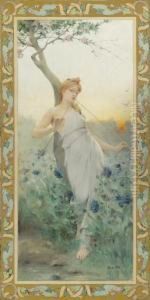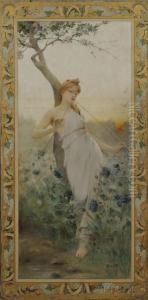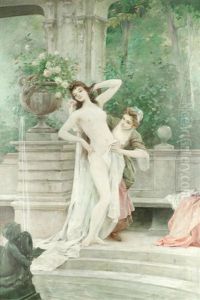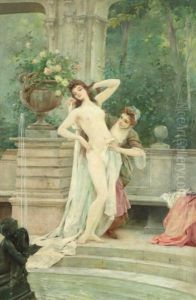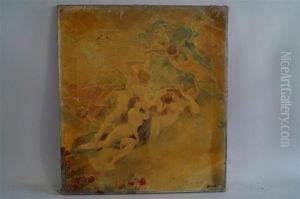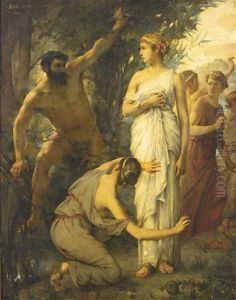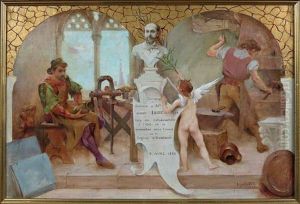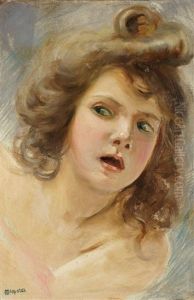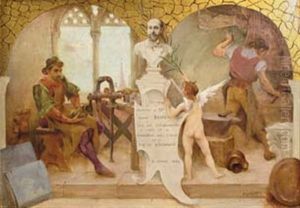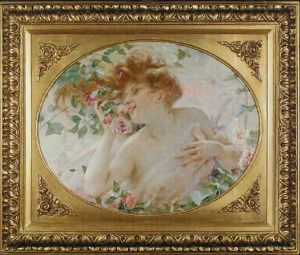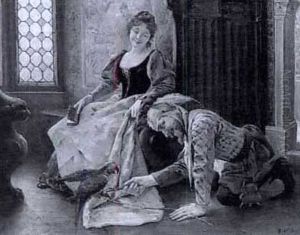Jean Alfred Marioton Paintings
Jean Alfred Marioton was a renowned French sculptor and engraver born in 1848 in Paris, France. Coming from a family of artists, Marioton was immersed in the world of art from a young age. His brother, Eugène Marioton, was also a noted sculptor, suggesting a familial environment rich in artistic influence and encouragement. Jean Alfred Marioton's career flourished in the late 19th and early 20th centuries, a period marked by a variety of artistic movements and innovations in Europe. Despite the evolving artistic landscape of his time, Marioton managed to carve out a distinct niche for himself with his classical style and meticulous attention to detail.
Marioton studied under Augustin-Alexandre Dumont, a prominent sculptor of the time, at the École des Beaux-Arts in Paris. This education not only honed his technical skills but also deeply rooted his artistic expressions in the classical tradition, despite the burgeoning popularity of modernist movements such as Impressionism and Post-Impressionism during his lifetime. Marioton's works encompassed a range of subjects, including allegorical figures, historical scenes, and portraits, executed with a level of craftsmanship and elegance that garnered him considerable acclaim.
He exhibited regularly at the Salon, the official art exhibition of the Académie des Beaux-Arts in Paris, where he gained recognition and accolades for his sculptures. Marioton's ability to capture the grace and ideal beauty of his subjects in marble and bronze won him a dedicated following, and his works were commissioned by private collectors as well as for public monuments. His notable works include statues and busts that reflect not only his mastery of form and anatomy but also his capacity to imbue his sculptures with a sense of life and emotion.
Jean Alfred Marioton's contributions to French sculpture were significant, and his legacy is preserved in various museums and collections in France and abroad. Despite the changing artistic tides of his time, Marioton remained committed to the classical ideals of beauty and harmony, making his works enduring testaments to the universal appeal of classical sculpture. He passed away in 1915, leaving behind a body of work that continues to be admired for its technical excellence and artistic integrity.
